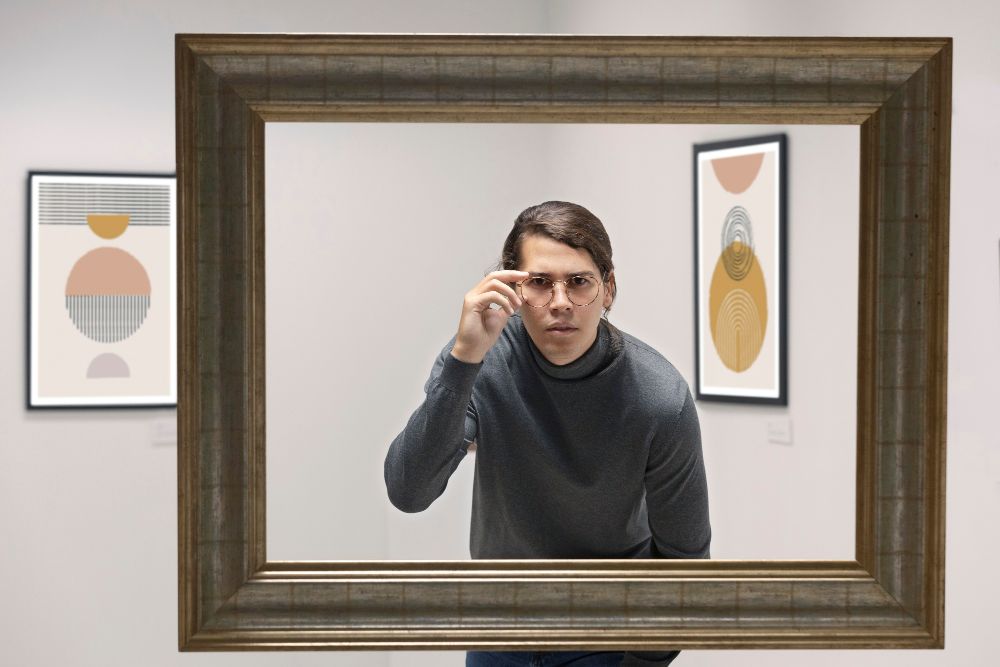Step into the enigmatic world of the Mona Lisa, where every stroke of Leonardo da Vinci's brush tells a tale shrouded in mystery and fascination. Beyond her enigmatic smile lies a canvas rich with history, secrets, and unexpected details that continue to captivate audiences worldwide. As we delve into the depths of this iconic masterpiece, prepare to uncover a treasure trove of surprising facts that offer new perspectives on one of the most renowned paintings in art history.
The Mona Lisa: A Brief History of da Vinci's Famous Painting
Leonardo da Vinci's Mona Lisa is one of the most iconic and recognizable paintings in the world. Created in the early 16th century, this masterpiece has captivated viewers for centuries with its enigmatic smile and mysterious aura. Let's take a closer look at the history of this renowned artwork and explore why it continues to fascinate people around the globe.
The Mona Lisa, also known as La Gioconda in Italian, was painted by Leonardo da Vinci between 1503 and 1506. Commissioned by the wealthy merchant Francesco del Giocondo, the painting is believed to depict Lisa Gherardini, the wife of Francesco, although this has been debated by art historians over the years.
Also read: Most Famous Painter In The History
One of the most intriguing aspects of the Mona Lisa is the ambiguity surrounding the identity of the sitter and the meaning behind her enigmatic smile. Leonardo's meticulous attention to detail and his use of sfumato, a technique that creates soft, blurred edges, imbue the painting with a sense of depth and realism, adding to its allure.
The Mona Lisa remained in Leonardo's possession until his death in 1519 when it was acquired by King Francis I of France. It has since become a part of the French royal collection and is now housed in the Louvre Museum in Paris, where it attracts millions of visitors each year.
Over the centuries, the Mona Lisa has been celebrated for its technical brilliance, artistic mastery, and emotional resonance. It has inspired countless artists, writers, and filmmakers and has been the subject of numerous theories, debates, and controversies.
One of the most famous incidents involving the Mona Lisa occurred in 1911 when the painting was stolen from the Louvre by an Italian handyman named Vincenzo Peruggia. The theft catapulted the Mona Lisa to even greater fame, and it was eventually recovered two years later.
Today, the Mona Lisa remains one of the most valuable and beloved works of art in the world. Its timeless beauty and enigmatic smile continue to captivate audiences, making it a true masterpiece of Renaissance art. Whether viewed in person at the Louvre or admired in reproductions around the world, the Mona Lisa continues to inspire wonder and intrigue, cementing its place in art history for generations to come.
Facts You Might Not Know about the Mona Lisa Painting Masterpiece
The Mona Lisa, painted by Leonardo da Vinci in the early 16th century, is one of the most famous and enigmatic works of art in history. While many people are familiar with the iconic image of a woman with a mysterious smile, there are several lesser-known facts about this masterpiece that add to its intrigue. Let's explore some fascinating tidbits about the Mona Lisa:
- Small Size, Big Impact
Despite its fame, the Mona Lisa is relatively small, measuring just 30 inches by 21 inches. Its modest size contrasts with its monumental significance in the world of art. - Mystery Surrounding the Identity
While it is widely believed that the Mona Lisa depicts Lisa Gherardini, the wife of a Florentine merchant, some art historians speculate that the woman in the painting could be someone else entirely, or even a self-portrait of da Vinci in disguise. - Unique Perspective
The Mona Lisa is renowned for its use of sfumato, a technique that creates soft, blurred edges and subtle transitions between colors and tones. This technique gives the painting a sense of depth and realism, drawing viewers into the mysterious world of the sitter. - Unfinished Masterpiece
Despite its flawless appearance, the Mona Lisa is actually an unfinished work. Leonardo da Vinci worked on the painting for several years, making subtle adjustments and refinements until his death in 1519. - Stolen Masterpiece
In 1911, the Mona Lisa was stolen from the Louvre Museum in Paris by an Italian handyman named Vincenzo Peruggia. The theft shocked the world and catapulted the painting to even greater fame. It was recovered two years later and returned to its rightful place in the Louvre. - Scientific Analysis
Over the years, scientists and art historians have conducted extensive analysis of the Mona Lisa, using techniques such as infrared imaging and x-ray fluorescence to uncover hidden details and secrets beneath the surface of the painting. - Cultural Impact
The Mona Lisa has had a profound impact on popular culture, inspiring countless parodies, adaptations, and references in music, literature, film, and fashion. Its enigmatic smile has become an enduring symbol of mystery and intrigue. - Unrivalled Security
Today, the Mona Lisa is one of the most heavily guarded artworks in the world. It is protected by bulletproof glass and a climate-controlled enclosure, ensuring its safety and preservation for future generations to enjoy.
Why Is the Mona Lisa So Famous?
The Mona Lisa, painted by Leonardo da Vinci in the early 16th century, is one of the most famous artworks in the world. Its fame can be attributed to several factors, each contributing to its enduring allure and cultural significance.
- Enigmatic Smile: One of the most captivating aspects of the Mona Lisa is the mysterious smile of the sitter. The ambiguity of her expression has intrigued viewers for centuries, sparking endless debate and speculation about the woman's thoughts and emotions.
- Artistic Mastery: Leonardo da Vinci was a master of his craft, known for his innovative techniques and meticulous attention to detail. The Mona Lisa showcases his unparalleled skill in rendering light, shadow, and perspective, creating a lifelike and captivating portrait that continues to awe viewers to this day.
- Historical Context: The Renaissance era, during which the Mona Lisa was painted, was a period of great cultural and artistic flourishing in Europe. The painting represents the pinnacle of Renaissance art, embodying the era's ideals of humanism, beauty, and intellectual curiosity.
- Mystery and Intrigue: Beyond its artistic merits, the Mona Lisa is shrouded in mystery and controversy. Questions surrounding the identity of the sitter, the meaning behind her enigmatic smile, and the techniques used by da Vinci have fueled fascination and speculation, adding to the painting's mystique.
- Theft and Recovery: The theft of the Mona Lisa from the Louvre Museum in 1911 catapulted the painting to even greater fame. The subsequent media frenzy and international search for the stolen masterpiece captured the public's imagination and elevated the Mona Lisa to iconic status.
- Cultural Impact: Over the centuries, the Mona Lisa has become a symbol of beauty, sophistication, and high culture. It has inspired countless artists, writers, filmmakers, and musicians, cementing its place in popular culture and ensuring its enduring relevance.
- Unrivalled Reputation: The Mona Lisa's reputation as a masterpiece is unmatched. It is revered by art critics, scholars, and the general public alike, drawing millions of visitors to the Louvre Museum in Paris each year to catch a glimpse of the iconic painting.
In conclusion, the Mona Lisa's fame can be attributed to a combination of factors, including its artistic brilliance, historical significance, enigmatic allure, and cultural impact. Its status as one of the most celebrated works of art in history is a testament to its enduring power to captivate and inspire audiences around the world.

